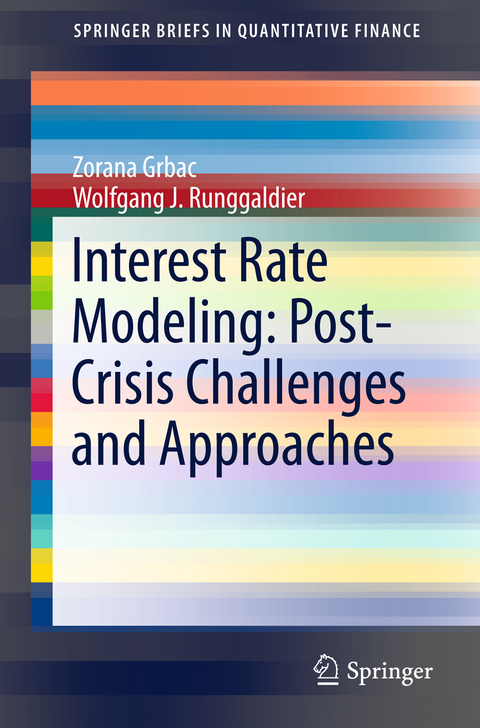
Interest Rate Modeling: Post-Crisis Challenges and Approaches
Springer International Publishing (Verlag)
978-3-319-25383-1 (ISBN)
Filling a gap in the literature caused by the recent financial crisis, this book provides a treatment of the techniques needed to model and evaluate interest rate derivatives according to the new paradigm for fixed income markets. Concerning this new development, there presently exist only research articles and two books, one of them an edited volume, both being written by researchers working mainly in practice. The aim of this book is to concentrate primarily on the methodological side, thereby providing an overview of the state-of-the-art and also clarifying the link between the new models and the classical literature. The book is intended to serve as a guide for graduate students and researchers as well as practitioners interested in the paradigm change for fixed income markets. A basic knowledge of fixed income markets and related stochastic methodology is assumed as a prerequisite.
Introduction.-1 Post-crisis fixed-income markets.-1.1 Types of interest rates and market conventions.-1.2 Implications of the crisis.-1.3 The new paradigm: multiple curves at all levels.-1.4 Interest rate derivatives.-2 Short rate models for multiple curves.-2.1 Exponentially affine factor models for the short rate and the Spreads.-2.2 Gaussian, exponential quadratic models.-2.3 Pricing of interest rate derivatives, part A: Pricing of FRAs (linear derivatives).-2.4 Pricing of interest rate derivatives, part B: Pricing of caps (optional derivatives).-2.5 Pricing of interest rate derivatives, part C: Pricing of swaptions (optional derivatives).-2.6 Relationship with models from the literature.-3 Multiple-curve HJM framework.-3.1 Setup and main ideas.-3.2 Absence of arbitrage.-3.3 Volatility structures and the corresponding models.-3.4 Pricing of interest rate derivatives in the HJM framework.-4 LMM multiple-curve extensions.-4.1 Libor market model (LMM) with stochastic basis.-4.2 AffineLIBOR models with multiple curves.-4.3 Cross-currency model analogy.-5 Beyond clean valuation of interest rate derivatives.-5.1 TVA (CVA, DVA, FVA) computations for multiple curve models.-5.2 Direct pricing under collateralization and funding constraints.
| Erscheinungsdatum | 27.01.2016 |
|---|---|
| Reihe/Serie | SpringerBriefs in Quantitative Finance |
| Zusatzinfo | XIII, 140 p. 5 illus., 1 illus. in color. |
| Verlagsort | Cham |
| Sprache | englisch |
| Maße | 155 x 235 mm |
| Gewicht | 268 g |
| Themenwelt | Mathematik / Informatik ► Mathematik ► Angewandte Mathematik |
| Wirtschaft ► Allgemeines / Lexika | |
| Wirtschaft ► Betriebswirtschaft / Management | |
| Schlagworte | 60H30 • 91G20 • 91G30 • 91G40 • Affine term structure methodology • Clean valuation • Game Theory, Economics, Social and Behav. Sciences • Interest rate models and derivatives • mathematics and statistics • Multicurve models • Post-crisis interbank risk • Quantitative Finance |
| ISBN-10 | 3-319-25383-2 / 3319253832 |
| ISBN-13 | 978-3-319-25383-1 / 9783319253831 |
| Zustand | Neuware |
| Informationen gemäß Produktsicherheitsverordnung (GPSR) | |
| Haben Sie eine Frage zum Produkt? |
aus dem Bereich


